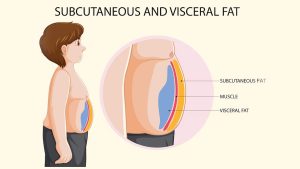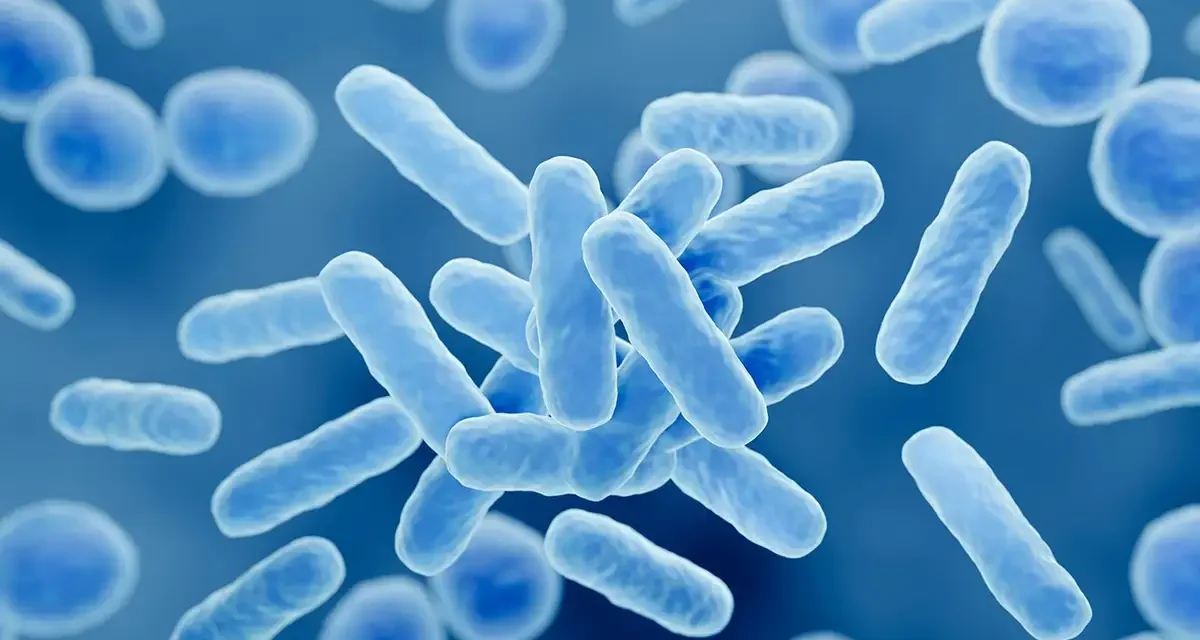In this article:
Crafting Your Own Probiotic-Rich Yogurt at Home
The Wonders of Probiotics
Probiotics are live microorganisms that, when administered in adequate amounts, confer a health benefit on the host. They are often referred to as ‘good’ or ‘friendly’ bacteria and are primarily known for their role in digestive health. However, their influence extends much further, impacting everything from inflammation levels to mental well-being.
Gut Health: The Cornerstone of Well-being
The gut microbiome, a complex community of microorganisms residing in our digestive tract, plays a pivotal role in our overall health. It’s involved in numerous bodily functions, including immune response, inflammation regulation, and they even affect mood and cognitive functions, like your ability to focus. Maintaining a balanced gut microbiome is essential for optimal health, and probiotics are key players in this balance.
The Sugary Truth About Store-Bought Yogurt
While yogurt is often touted as a healthful food, many commercial varieties are loaded with added sugars, which can offset the benefits of their probiotics. Excessive sugar consumption can lead to health issues, including inflammation and gut bacteria imbalances.
Store-bought yogurts typically harbor less beneficial bacteria strains compared to those available in pharmacies. However, pharmacy probiotics can be expensive, and taking pills lacks the appeal of enjoying real food. But did you know that you can create your own yogurt using pharmacy-bought probiotics? By doing so, you’ll cultivate your own beneficial bacteria at a fraction of the cost.
Now, let’s delve into the 3 most advantageous probiotic strains you can make your own yogurt with, one by one.
Lactobacillus Plantarum: Ease Digestive Discomfort
Lactobacillus plantarum, a robust probiotic strain commonly found in various fermented foods, offers an impressive range of health benefits. From anti-inflammatory properties to potential mental health improvements, this strain has garnered attention for its positive effects. Let’s explore some of its key benefits:
- Irritable bowel syndrome (IBS). If you struggle with constipation, diarrhea, or frequent bloating, Lactobacillus plantarum may be beneficial. Scientific studies have shown its potential in alleviating these symptoms.
- Blood sugar control: Research indicates that Lactobacillus plantarum can help regulate blood sugar levels. Lower HbA1c levels (average blood sugar levels over three months) have been observed in people with prediabetes, making it relevant for managing chronic inflammation and aging.
- Depression and sleep quality: In a study, Lactobacillus plantarum supplementation led to improvements in depression symptoms and sleep quality over a 30-day period.
- Athletic performance: one study suggested that Lactobacillus plantarum could be used as a supplement to improve exercise performance and for its anti-fatigue effect.
The Yogurt Made with Lactobacillus Plantarum
| Taste and consistency | How long to let it ferment | Optimal temperature |
| The taste of this homemade yogurt will be very similar to store-bought yogurt. While the consistency might be slightly more gluey, it’s still quite pleasant. | Creating yogurt from Lactobacillus Plantarum is relatively straightforward, but it does require a bit of patience. For the first batch, you may need to run two rounds (each lasting about 8-9 hours) in the yogurt maker. However, subsequent batches made from the previous batch will yield nice yogurt in just one round. | Maintain a temperature of around 37 degrees Celsius for optimal results. |
Lactobacillus Gasseri: Reduce Visceral Fat

Image courtesy of OnlyMyHealth
Lactobacillus Gasseri is another beneficial probiotic strain. It has been associated with various health benefits, including preventing bacterial vaginosis and potentially aiding in weight management. Additionally, this strain may play a role in reducing inflammation and supporting a healthy immune system.
The main benefit of Lactobacillus Gasseri lies in its ability to minimize visceral fat.
Here are some benefits associated with Lactobacillus Gasseri:
- Lactobacillus Gasseri promotes healthy abdominal visceral fat. While fat stored in the belly or in the superficial tissues of our body might be aesthetically unappealing, it’s not the worst kind we can have, from the health point of view. The worst kind you can store in your body is the one that collect around the internal organs. Lactobacillus Gasseri seems to be able to reduce the amount of visceral fat we store.
- Supports healthy glucose function and blood glucose levels.
- Promotes a healthy body mass index (BMI) and optimal body composition (more muscle, less fat).
- Reduces healthy waist and hip circumference ratios (makes you thinner).
- Increases the amount of fat excreted through the feces. The more you excrete, the less you absorb.
The Yogurt Made with Lactobacillus Gasseri
| Taste and consistency | How long to let it ferment | Optimal temperature |
| The taste of yogurt made with Lactobacillus Gasseri will be very similar to store-bought yogurt. The consistency, instead, will be more similar to that of fresh cheese. | Be prepared for more patience compared to using Lactobacillus Plantarum. The first batch will likely require 3 rounds in the yogurt maker. | Maintain a temperature of 37-38 degrees Celsius for best results. |
Saccharomyces Boulardii: Fighting Off Infections

Saccharomyces Boulardii has been shown to be beneficial for gut health, in particular for preventing and treating infections
Saccharomyces boulardii, a probiotic yeast, possesses a unique ability to combat gastrointestinal disorders, including diarrhea. It has been utilized in the treatment of inflammatory bowel diseases, with additional benefits related to enhancing gut barrier function and supporting the immune system.
- Reducing Candida Overgrowth: Saccharomyces Boulardii may help reduce the risk of Candida overgrowth. This effect is attributed to S. boulardii producing caprylic acid—an antifungal substance effective against Candida yeasts.
- Strengthening Gut Barrier: Research shows that Saccharomyces Boulardii strengthens the gut barrier, preventing leaky gut disease.
- Gastrointestinal Tract Disorders: Commonly used for preventing and treating gastrointestinal tract disorders, including diarrhea symptoms.
- Fighting Bad Bacteria: Saccharomyces Boulardii seems to be able to combat harmful bacteria responsible for common gastrointestinal infections, such as Helicobacter pylori and Clostridioides difficile, especially after antibiotic treatment. Anyway, more research is required on this topic.
The Yogurt Made with Saccharomyces boulardii
| Taste and consistency | How long to let it ferment | Optimal temperature |
| Saccharomyces boulardii belongs to the same yeast family used for making bread or pizza. It shares a similar taste and smell. | Making yogurt with Saccharomyces boulardii is straightforward, even from the first batch. | Unlike bread-making yeast, which thrives at 30 degrees Celsius, Saccharomyces Boulardii grows best at 37 degrees Celsius. |
DIY Yogurt Making: A Probiotic Adventure
While it’s possible to make yogurt without a yogurt maker, the process can be more complicated, and the results may not always be as desired. We strongly recommend using a yogurt maker for consistent results and ease of use. The investment required is minimal. Here’s our suggestion:
Buy our selected yogurt maker here:
Tips for Making Homemade Yogurt:
- Choose UHT Milk: To prevent the growth of harmful bacteria in your yogurt, opt for UHT (ultra-high temperature) milk.
- Maintain Clean Tools and Workspace: Keep your tools and work surface clean and disinfected (don’t forget to wash your hands!). This practice ensures that your yogurt lasts longer in the fridge. Since you’ll be using the old yogurt to make the new batch, cleanliness prevents the accumulation of unwanted bacteria.
- Renew the Probiotics: Use new probiotics every 6-7 batches to avoid contamination with unwanted bacteria or viruses.
- Avoid Mixing Probiotics: Be cautious not to mix different probiotic strains. Over time, one strain could dominate, affecting the overall balance in your yogurt.
- Storage: Store homemade yogurt in the fridge for up to a week.
- Pair with Gut-Friendly Foods: Enjoy your yogurt with other gut-friendly foods like cinnamon and berries for enhanced health benefits.
- Pre-Meal Ritual: Consider drinking a glass of water with a spoonful of your favorite yogurt dissolved in it, 15 minutes before meals. This allows the beneficial bacteria to reach your gut and support digestion. Add a spoonful of psyllium powder for even more positive effects.
In conclusion, incorporating these probiotic strains into your homemade yogurt not only lets you customize the probiotic content but also provides a way to reduce sugar intake. Plus, it’s a rewarding process that benefits your health right from your own kitchen.
For more tips on maintaining health and youthfulness at any age, explore our comprehensive article:
The 10 most efficient, scientifically proven habits to stay young and fit at any age
References:
- Ducrotté P, Sawant P, Jayanthi V. Clinical trial: Lactobacillus plantarum 299v (DSM 9843) improves symptoms of irritable bowel syndrome. World J Gastroenterol. 2012 Aug 14;18(30):4012-8. doi: 10.3748/wjg.v18.i30.4012. PMID: 22912552; PMCID: PMC3419998.
- Young-Sil Lee , Daeyoung Lee , Gun-Seok Park , Seung-Hyun Ko , Juyi Park , You-Kyung Lee and Jihee Kang. Lactobacillus plantarum HAC01 ameliorates type 2 diabetes in high-fat diet and streptozotocin-induced diabetic mice in association with modulating the gut microbiota. Royal society of chemistry. 2021 May 18; 12, 6363-6373 doi: 10.1039/D1FO00698C
- Ho YT, Tsai YC, Kuo TBJ, Yang CCH. Effects of Lactobacillus plantarum PS128 on Depressive Symptoms and Sleep Quality in Self-Reported Insomniacs: A Randomized, Double-Blind, Placebo-Controlled Pilot Trial. Nutrients. 2021 Aug 17;13(8):2820. doi: 10.3390/nu13082820. PMID: 34444980; PMCID: PMC8402034.
- Lee MC, Hsu YJ, Ho HH, Kuo YW, Lin WY, Tsai SY, Chen WL, Lin CL, Huang CC. Effectiveness of human-origin Lactobacillus plantarum PL-02 in improving muscle mass, exercise performance and anti-fatigue. Sci Rep. 2021 Sep 30;11(1):19469. doi: 10.1038/s41598-021-98958-x. PMID: 34593921; PMCID: PMC8484333.
- Kim J, Yun JM, Kim MK, Kwon O, Cho B. Lactobacillus gasseri BNR17 Supplementation Reduces the Visceral Fat Accumulation and Waist Circumference in Obese Adults: A Randomized, Double-Blind, Placebo-Controlled Trial. J Med Food. 2018 May;21(5):454-461. doi: 10.1089/jmf.2017.3937. Epub 2018 Apr 24. PMID: 29688793.
- Yun SI, Park HO, Kang JH. Effect of Lactobacillus gasseri BNR17 on blood glucose levels and body weight in a mouse model of type 2 diabetes. J Appl Microbiol. 2009 Nov;107(5):1681-6. doi: 10.1111/j.1365-2672.2009.04350.x. Epub 2009 Apr 21. PMID: 19457033.
- Ogawa A, Kobayashi T, Sakai F, Kadooka Y, Kawasaki Y. Lactobacillus gasseri SBT2055 suppresses fatty acid release through enlargement of fat emulsion size in vitro and promotes fecal fat excretion in healthy Japanese subjects. Lipids Health Dis. 2015 Mar 20;14:20. doi: 10.1186/s12944-015-0019-0. PMID: 25884980; PMCID: PMC4391304.
- Kim J, Yun JM, Kim MK, Kwon O, Cho B. Lactobacillus gasseri BNR17 Supplementation Reduces the Visceral Fat Accumulation and Waist Circumference in Obese Adults: A Randomized, Double-Blind, Placebo-Controlled Trial. J Med Food. 2018 May;21(5):454-461. doi: 10.1089/jmf.2017.3937. Epub 2018 Apr 24. PMID: 29688793.
- Suchodolski, J., Derkacz, D., Bernat, P. et al. Capric acid secreted by Saccharomyces boulardii influences the susceptibility of Candida albicans to fluconazole and amphotericin B. Sci Rep 11, 6519 (2021). https://doi.org/10.1038/s41598-021-86012-9
- Murzyn A, Krasowska A, Augustyniak D, Majkowska-Skrobek G, Łukaszewicz M, Dziadkowiec D. The effect of Saccharomyces boulardii on Candida albicans-infected human intestinal cell lines Caco-2 and Intestin 407. FEMS Microbiol Lett. 2010 Sep 1;310(1):17-23. doi: 10.1111/j.1574-6968.2010.02037.x. Epub 2010 Jun 16. PMID: 20629753.
- Czerucka D, Dahan S, Mograbi B, Rossi B, Rampal P. Saccharomyces boulardii preserves the barrier function and modulates the signal transduction pathway induced in enteropathogenic Escherichia coli-infected T84 cells. Infect Immun. 2000 Oct;68(10):5998-6004. doi: 10.1128/IAI.68.10.5998-6004.2000. PMID: 10992512; PMCID: PMC101564.
- Fu H, Li J, Xu X, Xia C, Pan Y. Effectiveness and Safety of Saccharomyces Boulardii for the Treatment of Acute Gastroenteritis in the Pediatric Population: A Systematic Review and Meta-Analysis of Randomized Controlled Trials. Comput Math Methods Med. 2022 Sep 20;2022:6234858. doi: 10.1155/2022/6234858. PMID: 36176742; PMCID: PMC9514928.
- Castagliuolo I, Riegler MF, Valenick L, LaMont JT, Pothoulakis C. Saccharomyces boulardii protease inhibits the effects of Clostridium difficile toxins A and B in human colonic mucosa. Infect Immun. 1999 Jan;67(1):302-7. doi: 10.1128/IAI.67.1.302-307.1999. PMID: 9864230; PMCID: PMC96311.
- Tung JM, Dolovich LR, Lee CH. Prevention of Clostridium difficile infection with Saccharomyces boulardii: a systematic review. Can J Gastroenterol. 2009 Dec;23(12):817-21. doi: 10.1155/2009/915847. PMID: 20011734; PMCID: PMC2805518.
Disclaimer
Consult a health professional before making significant changes to your diet, exercise routine, or supplement regimen. The information provided in this blog is intended to convey the latest scientific research in an accessible manner. However, it does not replace the advice of a medical professional. Take your health conditions into account and consult a qualified healthcare provider to ensure that the decisions you make are safe and appropriate for your specific health needs. Ultimately, you are responsible for your own health and well-being.






